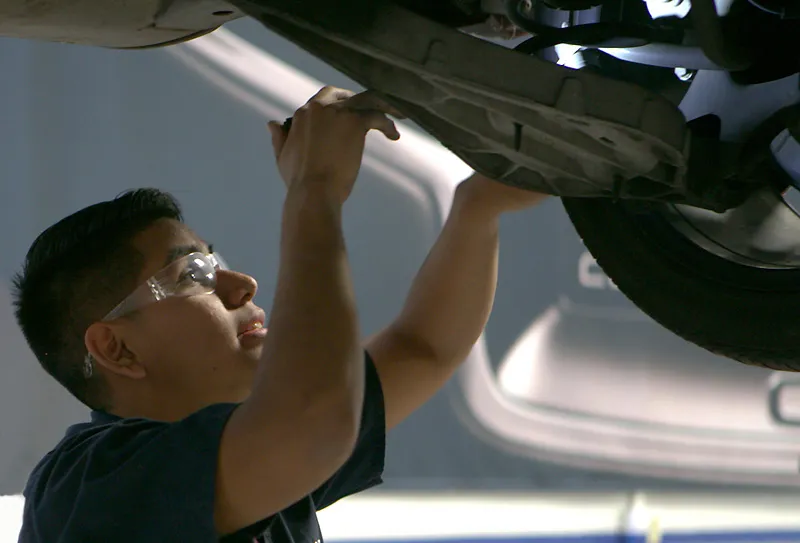2023.07.11
WHAT ARE BALL JOINTS?

How Do Ball Joints Work?
Ball joints are components located on the front suspension system of a vehicle. They help form a connection between control arms and steering knuckles. This provides smooth movement within the suspension.
Ball joints allow the steering knuckles to move in different directions while ensuring they remain attached to the vehicle. This motion allows the wheels to move up and down and side to side as needed.
A ball joint features a metal housing, a stud that can rotate within the housing and a socket enclosed in a lubricated casing. The ball stud is constantly moving when you’re on the road.

Upper and Lower Ball Joints
You can have upper or lower ball joints, depending on the type of vehicle and suspension. The difference is usually that upper ball joints are nonload-bearing (also known as “followers”), while lower ball joints are typically load-bearing.
When to Replace Ball Joints
Given the role they play in the suspension system, ball joints are going to experience daily wear and tear. At some point, they will need to be replaced.
The constant movement of the ball stud can cause it to become loose and move around inside the socket. As a ball joint wears out, more space develops between the stud and the socket, which can cause issues. Your safety could be at risk if ball joints become too worn out — in severe cases, the stud can pull out of the socket and cause a wheel to become partially disconnected from the vehicle.
Manufacturers often give specifications for the acceptable amount of space between the stud and the socket, which is good to familiarize yourself with. You can also watch for symptoms of worn ball joints, which include:
- Excessive vibration: Rattling and shaking that you can feel in the suspension or through the steering wheel can be a sign of wear and tear on the ball joints.
- Rattling or clunking noises: Ball joints that have become loose in their sockets have the potential to make all kinds of noises, including knocking, clunking or banging when going over bumps or turning.
- Irregular tire wear: Bad ball joints have the potential to cause uneven wear on the inside or outside of the tires.
- Car pulling to one side: A vehicle drifting to one side of the road could be a case of bad alignment, but it could also be a symptom of worn-out ball joints.
It’s important to take your vehicle to a trained technician who’s qualified to diagnose and repair this important part of your suspension!

Learn How to Repair Worn Ball Joints as an Automotive Technician
The Automotive Technology program at Universal Technical Institute (UTI) could help you gain the skills to diagnose and repair worn ball joints.
Not only will an education help when working on your own vehicle, you could also take the training you receive and apply it to an in-demand career in the industry.1 There are more than 73,000 estimated average annual automotive job openings in the United States.41
UTI’s Automotive program courses can help teach you the fundamentals of repairing different parts of a vehicle, including steering and suspension service and repair. Hands-on labs and classroom learning combine to help give you the foundation of knowledge you need for an entry-level career in the field.
Want to find out more? Request information today to connect with an Admissions Representative!